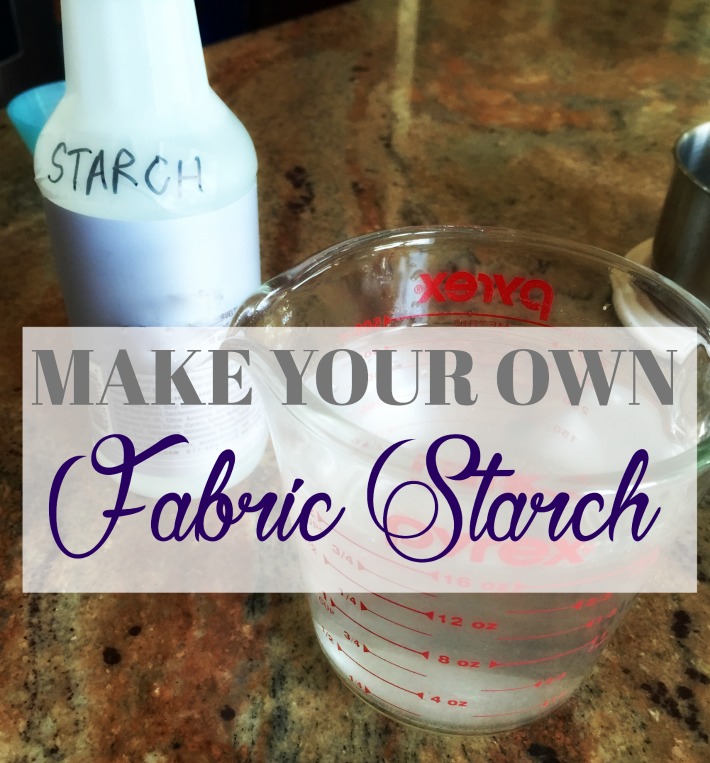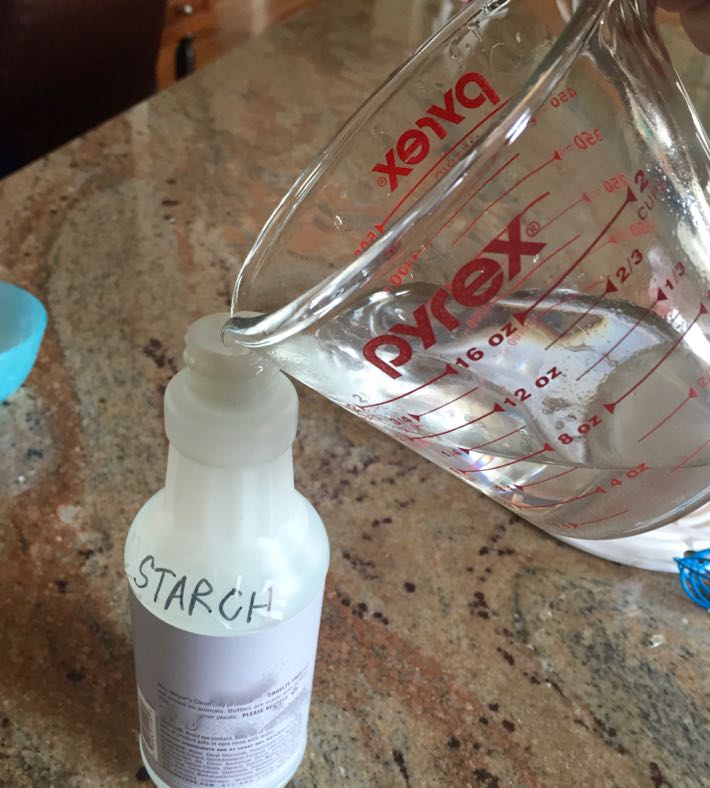Starch or pressing spray is essential for maintaining crisp, straight seams and accurate piecing. But should your sewing come to a screeching halt if you happen to run out? Or what if you're not a fan of the chemicals in everyday fabric starch — is there a better option? Homemade fabric starch is gaining popularity based on its low cost and quick recipe with natural ingredients you likely already have in your kitchen.

Photos via Right Sides Together
Want to try your hand at homemade fabric starch? Check out our easy tutorial below!
What is fabric starch, anyway?
Long before manufacturers began bottling it up and selling it, people made their own fabric starch out of, well, starch. Starch is a sticky, sugary carbohydrate found mostly in grains; it's the stuff that makes rice stick to the bottom of the pan or that turns leftover mashed potatoes into cement right on your plate.
It's also the primary ingredient in many glues, which is what makes glue basting such a fabulous technique. Ironing the starch removes its moisture, making it stiff and adding structure to whatever it's been applied to.
Here's how to make your own homemade fabric starch
1. Raid your kitchen and gather supplies
For the perfect solution of homemade fabric starch, you'll need:

- An empty spray bottle
- 1/4 cup lukewarm tap water
- 2 cups boiling water
- 2 tablespoons cornstarch*
- Essential oil for fragrance, such as lemongrass, lavender or thyme (optional)
* Some homemade fabric starch recipes (including another one of mine) use vodka in lieu of cornstarch. There are pros and cons to each approach. Cornstarch is easier to use and cheaper, but it needs refrigeration if you don't use it all right away. Cornstarch spray is also best for quilts that will be washed, so that bugs don't find and eat your fabric.
2. Combine the ingredients
Whisk the cornstarch into the tap water, doing your best to avoid any lumps. Add the 2 cups boiling water and 1-2 drops of essential oil, if you're using it.


3. Pour & shake
Pour the mixture into the bottle carefully, and then reattach the nozzle. Shake it up, making sure that all the starch has completely dissolved. (If it hasn't, all is not lost: just filter it out with a strainer or coffee filter.) Once your starch has cooled enough to handle, spray it generously on your fabric and press as desired. If you desire more or less stiffness in your fabric, you can alter the recipe to suit your needs.

Tips for using homemade fabric starch
- If you have your iron on high (as most of us quilters do), take care not to scorch your iron or your fabric. As a carbohydrate, starch burns easily and can potentially ruin your project or leave burn marks on your iron plate.
- Store any excess starch in the fridge so that it doesn't ferment or get moldy.
- When piecing, simply press your pieces — don't move the iron, or the damp fabric might get distorted.
- Clean your iron regularly with iron cleaner or with a solution of vinegar and water. Starch has a tendency to build up over time.

Making fabric earrings and want a bit of starch, but not looking to make a brick. Wish you’d given the vodka recipe as well. I’ll try it.
Thanks for the tips👏🏻👏🏻
Needed for various chrocheting projects.
I don't know why but I'm the type of person who knows how easy it is to look up how to do something(diy starch spray recipe for example) but I still want to see if I can do it myself first.. so 2/3 cup corn starch and like 3 cups water, yes it was milky as f.. but my super curly stretchy fabric is as hard as my head now lmfao
Well. When I saw this recipe, I felt like an idiot. It is as plain as the nose on your face. It is better than any store bought product. You can make it at any consistency to suit every need. Thank you for taking me back to memories of my grandmother. And it works better than I ever remember.
Will try it soon.
thank you for the recipe. just going to do a bit of crafting.
How can i produce dry starch and store for three months?
Maybe place a piece of parchment paper between the iron and the starched fabric to keep the iron clean?